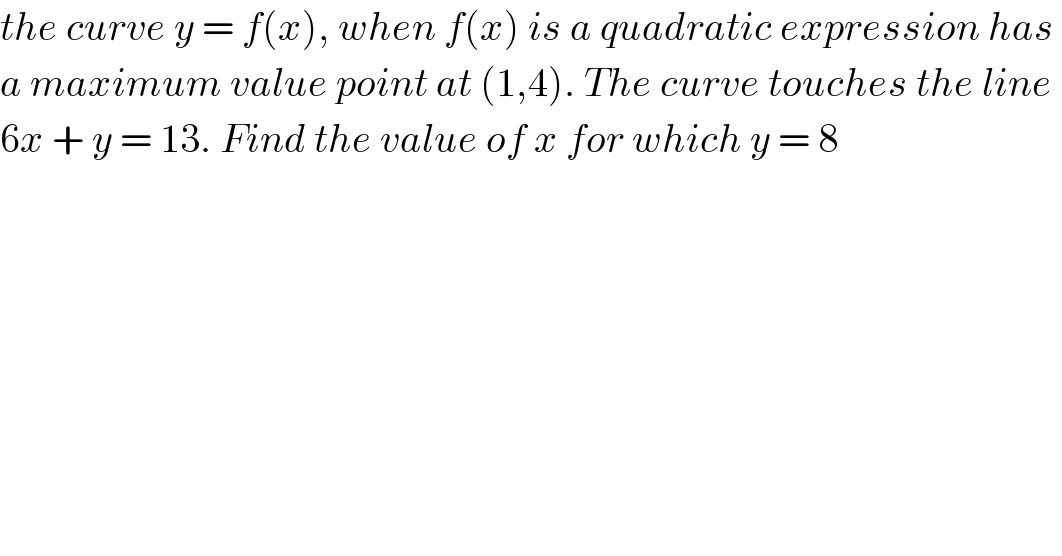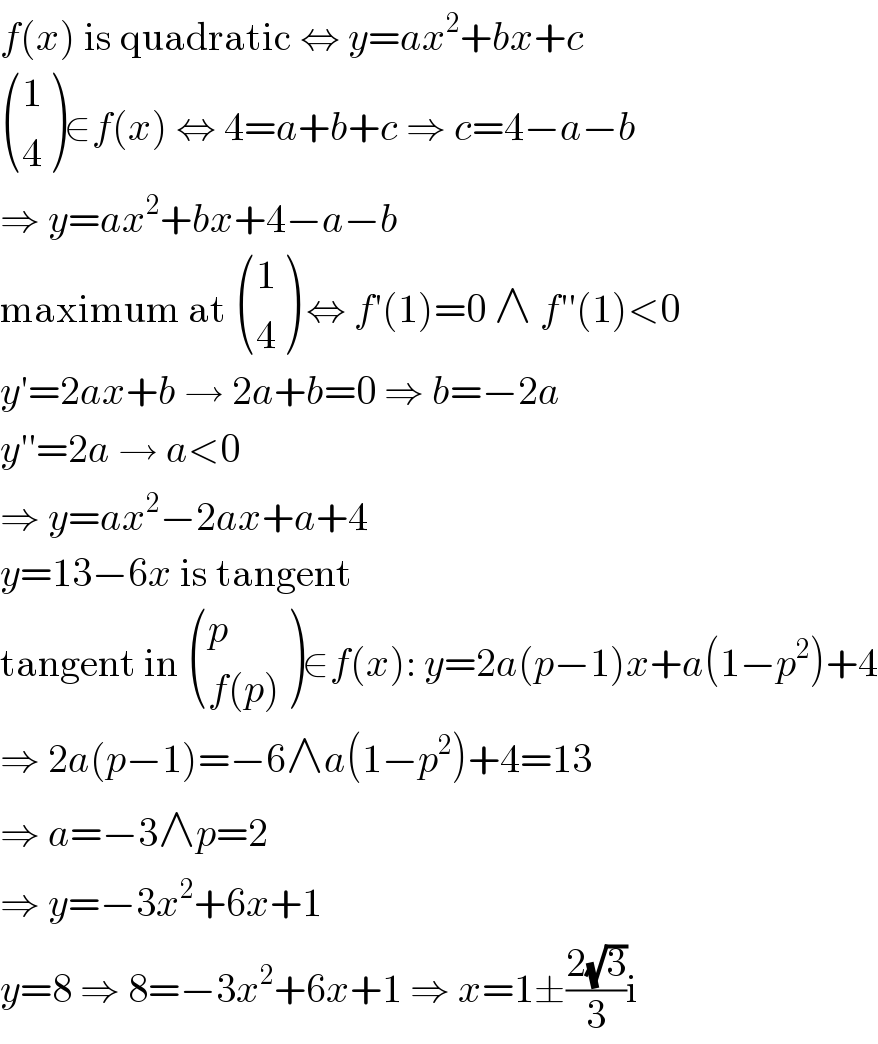
Question and Answers Forum
Question Number 71196 by Rio Michael last updated on 12/Oct/19

Answered by MJS last updated on 12/Oct/19

Commented by Rio Michael last updated on 13/Oct/19

| ||
Question and Answers Forum | ||
Question Number 71196 by Rio Michael last updated on 12/Oct/19 | ||
 | ||
Answered by MJS last updated on 12/Oct/19 | ||
 | ||
| ||
Commented by Rio Michael last updated on 13/Oct/19 | ||
 | ||